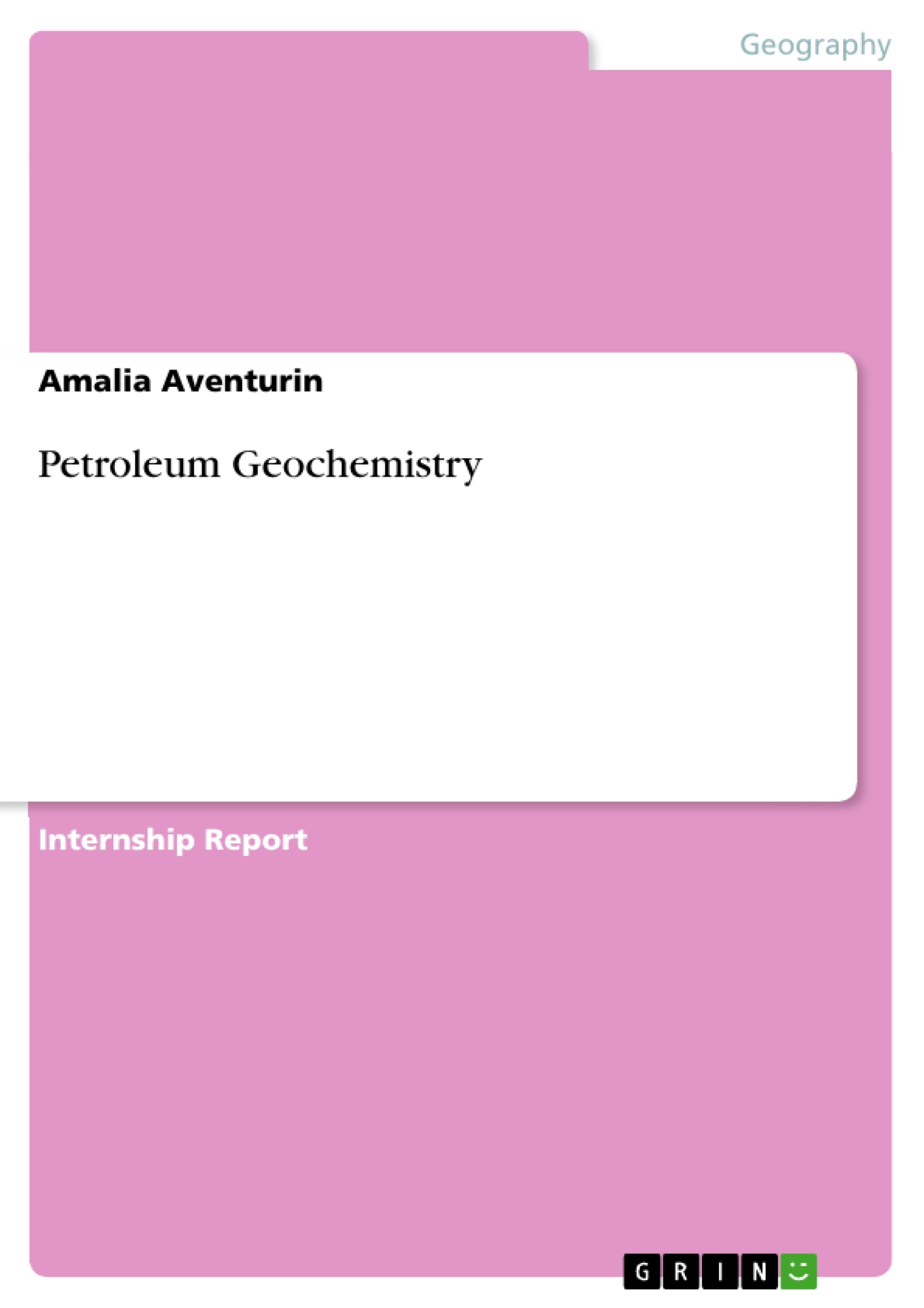Eight different samples of various locations have been analysed during the practical course. The
samples consisted of two source rock samples (Kimmeridge Clay and Blue Lias), two oil sands
(Wealden oil sand and Osmington Mills oil sand) and four oil samples including Libya oil, R828, Iraq
oil (09_205) and Schwedeneck. The Kimmeridge Clay represents an immature source rock with very
good potential. The Blue Lias source rock, kerogen type II, shows the same conditions as the
Kimmeridge Clay. The other Kimmeridge Clay sample kimsrf 1 indicates kerogen type I. The Wealden
oil sand shows intense biodegradation and plots in the area of a type II kerogen. The Osmington Mills
oil sand plots in type I kerogen area, and also shows intense biodegradation. The Libya oil is
comprised of a type II/III kerogen, similar to the R828 oil sample which additionally shows oxidizing
marine conditions. Iraq oil plots in the area of a type II kerogen and was deposited under marine
hypersaline conditions. The last sample, the Schwedeneck oil, was deposited under rather oxidizing
conditions and sterane analysis suggests an early oil window stage.
Inhaltsverzeichnis (Table of Contents)
- I. Summary
- II. Introduction
- III. Results and Discussion
- i. TOC
- ii. Rock Eval
- iii. Bitumen Extraction
- iv. Asphaltene Precipitation
- v. IATROSCAN (TLC-FID analysis)
- vi. GC (Gas Chromatography)
- vii. GC-MS
- IV. Conclusion
- V. References
- VI. Experimental Procedures
- i. TOC
- ii. Rock Eval
- iii. Bitumen Extraction
- iv. Asphaltene Precipitation
- v. IATROSCAN
- vi. GC
- vii. GC-MS
Zielsetzung und Themenschwerpunkte (Objectives and Key Themes)
The primary objective of this practical course is to analyze the depositional environment, maturity, and petroleum potential of various source rock and oil sand samples using standard geochemical screening and characterization methods. The analysis is based on the Norwegian Industry Guide to Organic Geochemical Analyses (NIGOGA).- Kerogen Type: Determine the type of organic matter present in the samples, which provides insights into the depositional environment and potential hydrocarbon generation.
- Depositional Environment: Analyze the specific geological conditions where the samples were deposited, such as marine, lacustrine, or terrestrial, using various biomarkers and geochemical ratios.
- Maturity: Evaluate the thermal maturity level of the samples, indicating their potential for generating hydrocarbons, using techniques like Rock-Eval pyrolysis and biomarker analysis.
- Petroleum Potential: Assess the suitability of the samples as source rocks, understanding their potential for generating hydrocarbons, using indicators like TOC content and Hydrogen Index.
- Biodegradation: Examine the extent to which the samples have been affected by microbial degradation, which can impact hydrocarbon quality and potential recovery.
Zusammenfassung der Kapitel (Chapter Summaries)
Summary
This chapter presents a concise overview of the analysis of eight different samples, including source rocks, oil sands, and oil samples. The summary highlights the key characteristics of each sample, such as kerogen type, depositional environment, and maturity level.Introduction
This chapter introduces the objectives of the practical course, focusing on assessing the kerogen type, depositional environment, maturity, and petroleum potential of the samples. It outlines the experimental procedures based on the NIGOGA guide, encompassing screening methods, bulk source rock analysis, and biomarker characterization.Results and Discussion
This section delves into the detailed analysis of the samples, covering aspects like TOC measurements, Rock-Eval Pyrolysis, bitumen extraction, asphaltene precipitation, IATROSCAN analysis, Gas Chromatography, and Gas Chromatography-Mass Spectrometry. The results are presented and discussed, providing insights into the kerogen type, depositional environment, maturity level, and petroleum potential of each sample.Conclusion
This chapter summarizes the main findings of the practical course, drawing conclusions about the characteristics of each sample based on the analysis results. It highlights key observations about kerogen type, depositional environment, maturity, and petroleum potential.Schlüsselwörter (Keywords)
Petroleum geochemistry, source rock, oil sand, kerogen type, depositional environment, maturity, petroleum potential, biodegradation, TOC, Rock-Eval pyrolysis, bitumen extraction, asphaltene precipitation, IATROSCAN, GC, GC-MS, biomarkers, NIGOGA, hypersaline, oxidizing, reducing, immature, mature, oil window.- Arbeit zitieren
- Amalia Aventurin (Autor:in), 2014, Petroleum Geochemistry, München, GRIN Verlag, https://www.grin.com/document/278498



